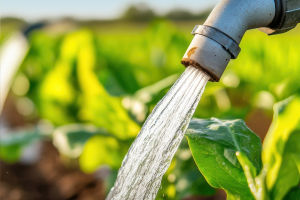
Welcome to the future of farming, Lykkers! In a world where the demand for food is constantly rising, the way we farm must evolve.
Smart farming, also known as precision agriculture, is a groundbreaking approach that combines advanced technologies with sustainable farming practices.
By using digital tools, data analysis, and automation, smart farming is paving the way for a more efficient, sustainable, and productive agricultural system. This article explores the innovations behind smart farming and its potential to address the global challenges facing agriculture today.
What is Smart Farming?
Smart farming refers to the use of modern technology to improve agricultural practices. The primary goal is to enhance productivity while minimizing environmental impact.
By leveraging data from various sources—such as sensors, drones, and satellites—farmers can make more informed decisions, optimize resource usage, and increase efficiency. This innovative approach integrates real-time monitoring, automation, and data analysis to create a more sustainable and productive farming system.
Key Technologies Driving Smart Farming
1. Drones and Satellite Imaging
Drones and satellite technology are revolutionizing the way farmers monitor their crops. These tools provide high-resolution images of large agricultural areas, enabling farmers to track plant health, detect pests, and assess water and nutrient needs.
Drones, in particular, can cover vast fields quickly and cost-effectively, providing real-time data that would be otherwise difficult to gather manually.
Satellite imagery allows for global crop monitoring, offering insights into plant health and growth patterns. This data helps farmers make timely decisions regarding irrigation, fertilization, and pest management, ultimately improving crop yield and reducing environmental impact.
2. Soil and Resource Sensors
Soil sensors are essential for precision farming. These devices collect data on soil moisture, temperature, pH, and nutrient levels, allowing farmers to make immediate adjustments to their practices. For example, if the soil moisture is too low, an irrigation system can be activated automatically. This technology ensures that resources like water and fertilizers are used efficiently, reducing waste and minimizing environmental harm.
3. Automation and Robotics
Automation is transforming agricultural labor. Robotic systems can perform repetitive tasks such as planting, weeding, and harvesting. These robots can work around the clock, increasing efficiency and allowing farmers to focus on more strategic tasks. Additionally, automation reduces the need for heavy machinery, lowering fuel consumption and greenhouse gas emissions.
Examples of automation include harvesting robots that pick fruits and vegetables without damaging the crops, and weed-control robots that use artificial intelligence to distinguish between crops and weeds, allowing for more targeted treatment.
4. Big Data and Predictive Analytics
The collection and analysis of large datasets are at the heart of smart farming. Sensors and devices generate massive amounts of data, which, when properly analyzed, reveal valuable insights that can improve farming outcomes. By identifying patterns in weather conditions, crop growth, and farming practices, predictive analytics helps farmers make proactive decisions that can improve crop performance and yield.
For instance, big data can predict weather extremes like droughts or heavy rainfall, helping farmers prepare in advance. It also aids in determining the optimal times for planting and harvesting, maximizing efficiency and minimizing risks.
5. Blockchain for Traceability
Blockchain technology is beginning to play a significant role in agriculture. It provides a secure and transparent way to track the entire food production process, from planting to harvest to sale. Blockchain ensures that consumers can trace the origin of their food, confirming that it was produced sustainably and ethically.
For example, some companies are using blockchain to trace the production of foods like poultry and dairy, allowing consumers to verify the sustainability of their purchases.
The Benefits of Smart Farming
1. Increased Productivity
By using advanced technologies like automated irrigation and precision fertilization, farmers can increase crop yields while using fewer resources. Smart farming practices enable higher productivity with lower costs, making food production more efficient.
2. Environmental Sustainability
Smart farming promotes responsible resource use, reducing waste and minimizing environmental impact. Technologies such as precision irrigation and targeted pesticide application help conserve water, preserve soil quality, and reduce chemical runoff, contributing to environmental sustainability.
3. Improved Quality of Produce
Through constant monitoring and data analysis, smart farming ensures that crops are grown under optimal conditions, resulting in higher-quality produce. This precision approach helps minimize crop damage and loss, improving the overall quality of food available in the market.
Challenges and Future Prospects
While the benefits of smart farming are clear, the adoption of these technologies faces several challenges. High initial costs, technical complexity, and limited access to advanced tools in rural areas can hinder the widespread adoption of smart farming practices. Additionally, the collection and analysis of large amounts of data raise concerns about privacy and data security.
However, initiatives like Horizon Europe are providing funding for agricultural innovation, helping to overcome these barriers. As technology becomes more accessible and affordable, the future of smart farming looks increasingly promising.
The Role of ITS Agro
The ITS Agroalimentare is playing a pivotal role in educating future professionals in the field of smart farming. Through specialized courses, students are gaining expertise in digital technologies, sustainable farming practices, and agricultural supply chain management, preparing them to drive the transformation of the agricultural sector.
Conclusion: A Smart Future for Agriculture
Smart farming is not just a response to the challenges of today; it is a revolutionary approach that combines innovation and sustainability to build a better future for food production. By adopting smart technologies, farmers can increase productivity, reduce waste, and protect the environment.
With continued technological advancements and support for innovation, smart farming is set to play a crucial role in ensuring a sustainable and prosperous agricultural future.
The Future of Agriculture Technology is Now
Video: Colorado State University


